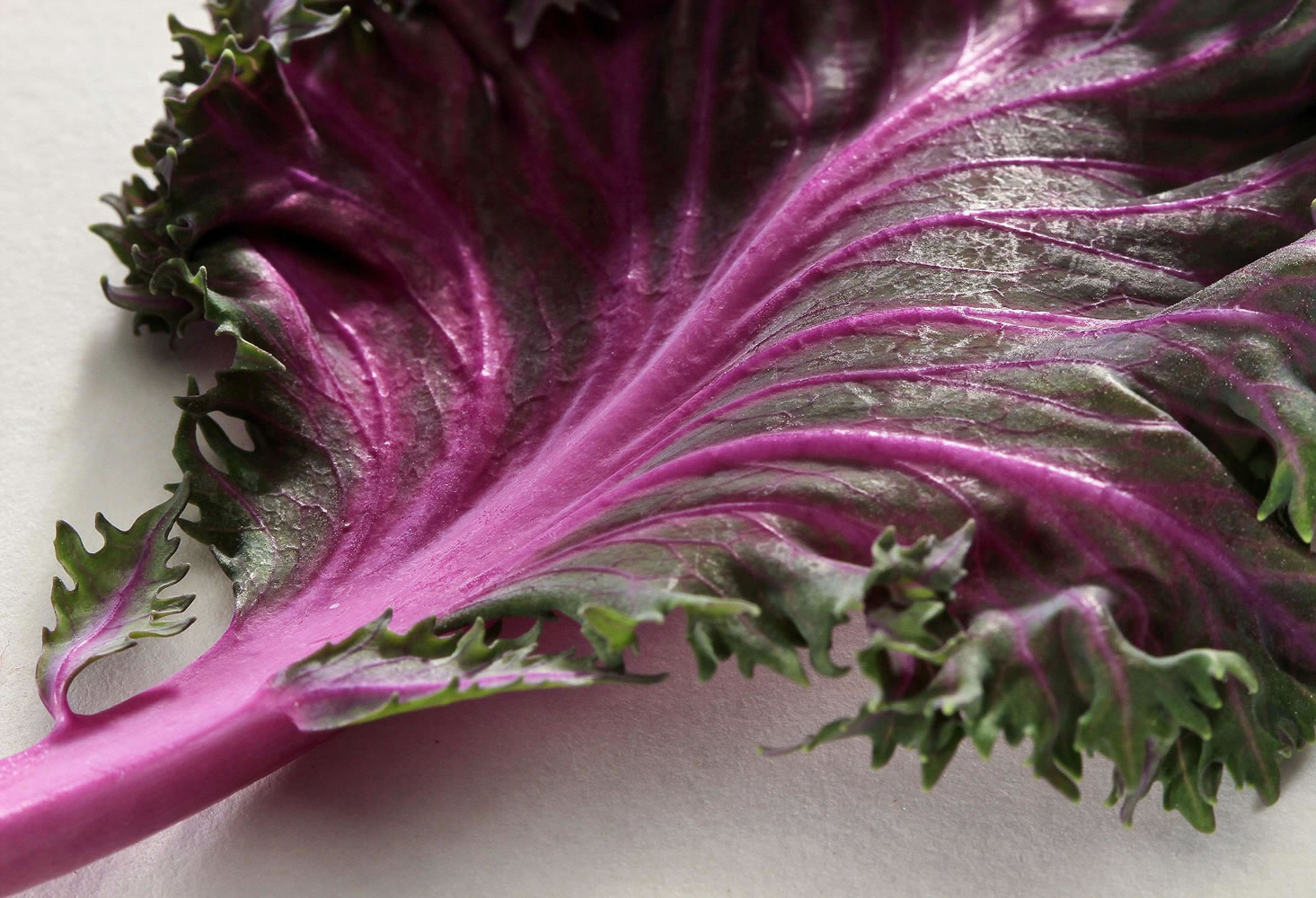This week’s vegetable, kale, is also called borecole, which means “farmers cabbage” in Dutch. Kale is a leafy vegetable belonging to the same family as cabbage, cauliflower and Brussels sprouts.
Kale is recognized for its numerous health benefits. They include many antioxidants that protect against heart disease and cancers. It also contains a lot of fiber, which helps control blood sugar levels and maintain a healthy intestinal tract.
Kale is easy to grow in cooler climates and is found from late winter through spring months. There are three varieties of kale: curly, dinosaur and ornamental.
Curly kale is the most popular variety and is easily found in markets. It has ruffled, deep-green leaves and fibrous stalk. Its flavor is pungent and peppery.
Ornamental kale, or salad savoy, can be green, white, or purple with stalk growth forming a loose head. This variety is used in landscaping but also is edible, with a mellower flavor and more tender leaves than curly kale.
Dinosaur — also known as lacinato or Tuscan — kale has dark blue-green leaves with an imprinted grain. Its flavor is slightly sweeter and more delicate than curly kale.
At the market, select kale that has firm, crisp, distinctly colored leaves and stiff, moist stems. Avoid leaves that are brown or yellow, have small holes or are wilted. Smaller leaves tend to be milder in flavor and more tender.
Kale can be stored for as many as five days in a sealed plastic bag, with the air removed, in a refrigerator crisper. Do not wash the kale before storing it. Over time, the flavor will increase during storage.
Kale is best when cooked properly. When preparing kale, break off the woody portion of the stem and rinse the leaves thoroughly in cool, running water. Cut the leaves into half-inch pieces, and the stems into quarter-inch lengths. To enhance the nutritional benefits, splash some lemon juice over the kale and it let stand for five minutes before steaming.
If kale’s distinctive flavor is an issue, mince the kale finely and incorporate it into recipes as a substitute for parsley or cilantro.
Kale chips make a delicious snack and are easy to prepare. Preheat the oven to 350 degrees. Tear washed leaves into 3-inch pieces and discard the stems. Place the kale on a parchment paper-lined baking sheet. Apply a light coating of olive oil to the kale and sprinkle with your favorite flavoring, such as salt, garlic powder, pepper or onion powder. Put the pan into the oven and bake for 10 to 15 minutes or until kale edges are brown but not burned.
Another quick serving idea is to combine pine nuts, feta cheese and chopped kale with whole grain pasta tossed with olive oil.
For longer storage, freeze kale and other greens to maintain the best-quality product. Water blanch the kale for two to three minutes, drain and package well before freezing. Kale may be pressure canned, but the quality is not as good as it would be if frozen.
Leigh Rosenberger is a WSU Clark County Extension master food preserver. For more information on the master food preserver program, call 360-697-6060, ext. 5366, or visit clark.wsu.edu.



